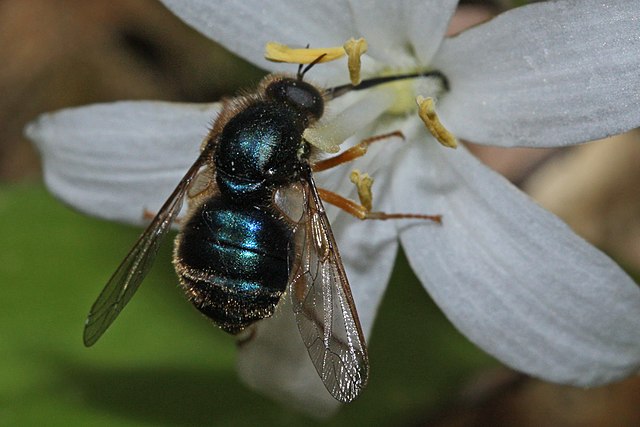The Acroceridae are a small family of odd-looking flies. They have a hump-backed appearance with a strikingly small head, generally with a long proboscis for accessing nectar. They are rare and not widely known. The most frequently applied common names are small-headed flies or hunch-back flies. Many are bee or wasp mimics. Because they are parasitoids of spiders, they also are sometimes known as spider flies.
Acroceridae
Acroceridae plate from Johann Wilhelm Meigen's Europäischen Zweiflügeligen
Eulonchus sapphirinus feeding on Clintonia uniflora
Psilodera fasciata, showing the proboscis below the body, holoptic eyes, texture of wings, and bee mimicry
Nemestrinidae, or tangle-veined flies is a family of flies in the superfamily Nemestrinoidea, closely related to Acroceridae. The family is small but distributed worldwide, with about 300 species in 34 genera. Larvae are endoparasitoids of either grasshoppers (Trichopsideinae) or scarab beetles (Hirmoneurinae). Some are considered important in the control of grasshopper populations. Adults are often observed on flowers.
Nemestrinidae
Moegistorhynchus longirostris
Neorhynchocephalus tauscheri (10) and Hirmoneura obscura (11) in Europäischen Zweiflügeligen







